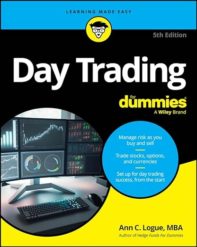Midwestern writer Twitter was really salty about a story that ran recently in Harper’s about Kenosha. Harper’s is a prestige magazine, and many writers would love the opportunity to have a clip from it. But the editors are sometimes clueless about the rest of the world.
The Midwest is strangely misunderstood, dismissed as flyover land by people on the coasts. Seemingly every year, the New York Times travel section publishes a story about Chicago that is stupid for either its obliviousness (did you know Chicago has beaches?) or its sloppiness (like implying that Hyde Park is a quick bike ride away from Wicker Park.) Then there are the political stories, the “let’s go talk to old, white men in diners to find out why they voted for Trump” pieces. I especially like when reporters do these from my hometown, Youngstown Ohio, because Hillary Clinton won in Youngstown.
There are many reasons why Trump carried Wisconsin in 2016. As a reminder: 1) Racism and sexism. 2) People were angry at the slow pace of economic improvement. Obama, Sanders, and Trump got that. Hillary Clinton didn’t. 3) Hillary Clinton didn’t campaign in Wisconsin. 4) The state government passed voter suppression laws. 5) Nate Silver said that Hillary Clinton was going to win in a landslide, so a lot of people figured they didn’t need to vote. 6) Russian trolls sent messages out on social media assuring people that Trump could not have possibly known about NYTimes reporter Serge Kovaleski’s disability, it was only Trump’s “expressive” way of speaking.
This article is a nice attempt by someone from California, who had never heard of Kenosha before he dropped in to talk to old white men in diners about why they voted for Trump. He missed the biggest thing about Kenosha, at least in the circles in which I travel. Because of its location on the terminal moraine of the last ice age, it is home to some of the finest woolly mammoth remains in the world. Why, the animators from Ice Age visited the Kenosha Public Museum as part of their research. And admission is free!
But where the author really missed is on the issue of race. He mentions the racial wealth and employment gaps in south-eastern Wisconsin, but not in as much depth as the story deserved. He identifies only one of his sources as being Black, which leads me to believe that everyone else was white.In other words, he missed what has become the biggest non-weather related story this month.
Racial issues in the Midwest’s industrial cities are as complicated as racial issues anywhere, but there is no room for people of color in the Midwestern flyover land stereotype. In fact, large numbers of Black people left the South for better opportunities, and the same factory jobs that gave white people entry into the middle class also gave Black people an entry, and the same de-industrialization that has devastated the white middle class has also devastated the Black middle class. But our response to one group has been sympathy and to the other has been scorn.
Kenosha is a town that has been hurt by de-industrialization. Jobs at the outlet mall don’t pay as well as jobs at Chrysler did. But instead of addressing this in a way that would help everyone, our national policy has been more interested in pitting white people against Black people. Jacob Blake is only the most recent victim. Let’s hope he’ll be the last.


